
Unless you’ve been on an extended retreat, you’ve likely heard the term “Mandela Effect” recently. ” While many are surprised by the recent surge of interest in the “Mandela Effect,” those of us who have been researching and writing about this phenomenon of reality shifts and alternate histories have long been anticipating just such a rise of interest. The “Mandela Effect” is named after South African anti-apartheid revolutionary Nelson Mandela, who became a topic of interest in the year 2010 by people noticing with surprise that he was alive at that time–since many people remembered him having died while incarcerated. I had published similar accounts of the dead being observed alive again in my 1999 book, Reality Shifts, and reporting first-hand accounts on the RealityShifters website from people all around the world noticing many dead people alive again. Observations of dead people alive again are just one of many types of Mandela Effects, with other notable examples including changes to song lyrics, movie dialogue, movie scenes, physical geography, physiological anatomy, and product names.
The Mandela Effect is one of those things most people won’t believe in until it happens to them. Like falling in love or going through heartbreak, the Mandela Effect is something you have to experience in order to fully embrace. And even then, it often takes more than one or two experiences to break through the resistance most of us have to accepting the existence of something that fundamentally challenges our unspoken foundational assumption that facts and historical events don’t change. This bias has been poetically expressed in the Rubaiyat of Omar Khayyam:
“The moving finger writes; and, having writ, moves on:
nor all thy piety nor wit shall lure it back to cancel half a line,
nor all thy tears wash out a word of it.”
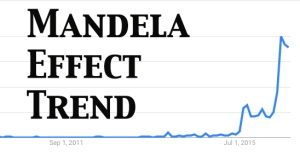
Google trend graph for “Mandela Effect”
When we encounter something indicating evidence that in fact, history has changed–it feels shocking to discover some of the lines have been canceled and washed out! We seem to be approaching ‘tipping point’ where it’s getting harder for scoffers to say there’s no such thing as the Mandela Effect / reality shifts / alternate histories. The term “Mandela Effect” originated with blogger Fiona Broome in 2010 after she attended a conference where many people talked with her about remembering how Nelson Mandela had died many years earlier–though official recorded history at that time indicated no such thing had actually occurred.
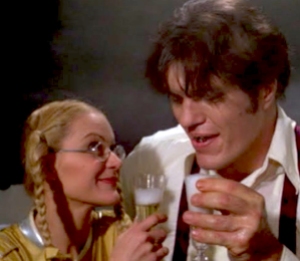
Dolly and Jaws in “Moonraker”
Thanks to articles written by some Mandela Effect experiencers, the Mandela Effect shows evidence of increasing in popular awareness. Mandela Effect articles have been written by experiencers including the Lewiston Sun Journal’s Mark LaFlamme (“The Mandela Effect is Freaking Me Out“) who noticed a change on which side of his father he’s standing by in an old family photo;the New Zealand Herald’s Karl Puschmann (“Berenstein or Berenstain? The Riddle Making Book Lovers Mad“) who is certain the popular children’s books ought to be spelled “Berenstein” and not the way they’ve supposedly ‘always been spelled’ as Berenstain; and San Diego City Beat’s Tom Siebert (“Technology and Memory Down the Rabbit Hole“) who noticed a change to a memorable scene in a James Bond movie, “Moonraker,” in which the girl with the braces who fell in love with another character with shining teeth no longer has braces. I watched The James Bond film “Moonraker” several times while in college, and also remember the memorable scene in which the blonde girl named “Dolly” who wears glasses and braids shares a cheesy moment with Richard Kiels’ character, “Jaws,” when they notice how his shiny teeth complement the shiny braces on her teeth. Except now, she doesn’t have any braces on her teeth.
Taken individually–the way such observations of discrepancies between what we remember and recorded historical evidence have always been noted up until now–a single person feeling unsettled by noticing such a change would have been chalked up to their having made some kind of cognitive error. When such “mis-remembered” recollections are considered collectively, we are presented with the possibility that we are witnessing collectively agreed-upon awareness of differently remembered historical facts that we can start to take notice of.
Some scoffers have leapt to the conclusion that Mandela Effect experiencers who are noticing long-familiar words in movies, TV shows, books, and products are most likely suddenly sharing ‘false memories,’ due to the fact that human memories are not fully reliable. Such an explanation allows us to leave unquestioned some old assumptions that have quietly started to crumble at their very foundations since the advent of quantum physics just over a hundred years ago. While quantum physics shows us there can be no such thing as an objective observer, and now that two thirds of physicists recently surveyed agree that you and I and everything that exists does so in a superposition of states–we clearly need to revise both our scientific methodology and our assumptions about reality.
While I agree with the observation that human memories often do not match current historical records, it’s clear that stopping the thought process at that point is premature, and does not match what we are learning about the primacy of quantum logic in the natural world.
I’ve been researching this phenomena since the 1990s. It was originally called “reality shifts,” and first appeared in print in the book “Future Memory” by PMH Atwater to describe common (yet strange) experiences that near-death experiencers frequently have. I have been reporting on individual recollections of alternate histories involving everything from changes in books, to dead people alive again, to changes in the way motor memory works since 1999, in the earliest edition of my first book on this subject, Reality Shifts: When Consciousness Changes the Physical World, and in my free monthly Realityshifters ezine. I’m currently pursuing this Mandela Effect / reality shift topic in interviews with experts in the fields of quantum biology such as JohnJoe McFadden, quantum cognition such as Jerome Busemeyer, and quantum cosmology such as Yasunori Nomura on my blog and “Living the Quantum Dream” radio show. What I’m noticing is that this phenomenon appears to not be new, but rather we have reached a point in society where for the first time we are able to share memories with others that are different from the collective whole–and sometimes our memories show the same kind of alternate pasts that physicists such as Stephen Hawking have told us exist.
When we consider the matter of “confabulation” and “false recollections” at this dawning of the new Quantum Age, we see that we may eventually call such things “alternate recollections,” in recognition of awareness of the fact that we know that each and every one of us exists in a superimposed state, with access to many possible alternate histories, presents, and futures. The idea that the many worlds of quantum physics might be one and the same as the multiverse has been proposed by such esteemed physicists as Dr. Yasunori Nomura and Dr. Raphael Bousso of UC Berkeley, and increasing numbers of scientists are feeling optimistic that we might yet find evidence that we indeed live in a multiverse.
Finding Evidence of Many Worlds in Alternate Histories
There is an exciting human side to the subject of alternate histories and parallel worlds. While we don’t yet have technology to show photos from your past with evidence of parallel universes impinging on the very fabric of reality since the day you were born, we can look to see what kinds of evidence we are able to collect more easily. If we were feeling the effects of parallel universes, we would expect to occasionally notice that history doesn’t stay put. Occasionally, we’d have very different ideas of what happened than we’ve had before, or than others have had before. What would such alternate histories be like?
 Dr. Robert A. Burton recounts a fascinating experience in his book, On Being Certain, of attending a medical school reunion dinner in which conversation turned to where people were when they heard the news that Kennedy was assassinated. Burton and his classmates had all been in their second year of medical school, attending similar classes and hanging out together. An argument broke out amongst the reunion attendees as a urologist thought they were all at lunch, an internist remembered they’d been in the lab, and a pathologist remembered being at a pub down the street from the med center. With classmates turning to Burton to be the tie-breaker, setting history straight, the pathologist and urologist both agreed on one thing as they announced in unison, “Everyone remembers the Kennedy assassination.”
Dr. Robert A. Burton recounts a fascinating experience in his book, On Being Certain, of attending a medical school reunion dinner in which conversation turned to where people were when they heard the news that Kennedy was assassinated. Burton and his classmates had all been in their second year of medical school, attending similar classes and hanging out together. An argument broke out amongst the reunion attendees as a urologist thought they were all at lunch, an internist remembered they’d been in the lab, and a pathologist remembered being at a pub down the street from the med center. With classmates turning to Burton to be the tie-breaker, setting history straight, the pathologist and urologist both agreed on one thing as they announced in unison, “Everyone remembers the Kennedy assassination.”
If this was the first time such differences of memory related to significant events occurred, we might dismiss it as a humorous aside. But the fact of the matter is that researchers are increasingly becoming aware of what they call “false recollections.” With the advent of the Quantum Age, we may eventually call them “alternate recollections,” indicating awareness of the fact that we know that each and every one of us exists in a superimposed state, with access to many possible alternate histories, presents, and futures.
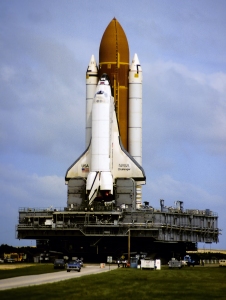 Ulric Neisser and Nicole Harsch conducted studies of Emory University students’ accuracy of recollections of events at the time of the Challenger space shuttle explosion, starting by collecting first-hand accounts from 106 students the day after the disaster detailing how they’d heard of the explosion, what they’d been doing at the time, where they were, and how they felt. The researchers followed up with the same students two and a half years later, and were startled to find that students achieved a mean score of 2.95 compared to a perfect score of 7. Less than 10% of the students were able to exactly match their original recollection of events, and over half of the students got a score less than 2.
Ulric Neisser and Nicole Harsch conducted studies of Emory University students’ accuracy of recollections of events at the time of the Challenger space shuttle explosion, starting by collecting first-hand accounts from 106 students the day after the disaster detailing how they’d heard of the explosion, what they’d been doing at the time, where they were, and how they felt. The researchers followed up with the same students two and a half years later, and were startled to find that students achieved a mean score of 2.95 compared to a perfect score of 7. Less than 10% of the students were able to exactly match their original recollection of events, and over half of the students got a score less than 2.
The most noteworthy findings in this “flashbulb” memory study were student reactions when confronted with conflicting accounts. Many students persisted in confidently claiming that their current memories of events were completely accurate, even when confronted with their own hand-written journal entries. One student summed up what happened succinctly,
“That’s my handwriting, but that’s not what happened.”
It’s important to note that in this new Quantum Age, such cases of alternate histories are to be expected. They provide evidence of the superposition of states that we and everything around us exists within, so we can expect to occasionally see documented records from the past that differ from what we recall. In the Quantum Age, we understand that seeing our own handwritten notes that aren’t at all what we remember is one way that alternate histories become known.
Physicists Agree: You’re in a Superposition of States
When we understand that our belief structures are creations of our minds, we start noticing how varied individual belief structures can be from person to person. What one person considers to be realistic and matter-of-fact might seem outrageously peculiar to another. Even the idea that other people actually see images in their minds may seem outlandish to some people, let alone what those people see. When enough people shift their belief structures to look at the world in fresh, new ways, cultural paradigms shift.
Staying current with new scientific findings can help. While most non-physicists would likely see a solid physical object such as a table or a chair as only what it currently appears to be, a remarkable 2/3 majority of physicists interviewed in 2011 stated they believe that all objects can exist in superimposed states—much the way we know quantum ‘particles’ exist as energetic probabilities as much as physical particles we can measure and observe. University of Portland, Oregon, physics professor, Maximilian Schlosshauer summarized this remarkable agreement thus,
“More than two-thirds believed that there is no fundamental limit to quantum theory—that it should be possible for objects, no matter how big, to be prepared in quantum superpositions like Schrödinger’s cat. So the era where quantum theory was associated only with the atomic realm appears finally over.”
A Scientific Basis for Instantaneous Adaptation in Stressful Times

John Forster Cairns
The scientific assumption that organisms experienced random mutations was seriously shaken by Harvard professor John Forster Cairns 1988 proposal that the organisms themselves were preferentially producing beneficial mutations. Cairns conducted experiments with E. coli bacteria that demonstrated that in times of stress, when the bacteria were starved from food they were capable of digesting, they made “adaptive mutations” to be able to receive nutritive sustenance from a food source they’d never been able to consume before. This phenomenon in which E. coli mutated exactly the most optimal genes precisely when that mutation was required had no known basis nor explanation from established theories in genetics–and indeed seemed to contradict one of the central dogmas of molecular biology, that information only flows in one direction during transcription from DNA out to proteins to a cellular organism environment. John Cairns and Julie Overbaugh and others proposed a mechanism that what might be happening is that “the cell could produce a highly variable set of mRNA molecules and then reverse-transcribe the one that made the best protein.”
If reverse-engineering mutations by bacteria in times of starvation so they can start digesting lactose sounds crazy, it might help to know there exists a similar proven case of successful quantum biological adaptation: photosynthesis. Those who expect modern human technology to be faster and more efficient than the rustic natural world are quite surprised to learn that our best photovoltaic cells are only 20% efficient, compared with photosynthesizing plants and bacteria that regularly achieve 95% efficiency rates for transforming sunlight into energy. Plants have existed on Earth for millions of years, so it’s not too surprising to find that their natural process of photosynthesis likely utilizes quantum coherence to speed things up. In decades past, scientists believed that excited electrons carried energy randomly through photosynthetic systems in plants, hopping from one molecule to the next. More modern measurements of energy in the new field of quantum biology studying photosynthesizing plants indicates something much more efficient is going on. What appears to be happening is that electrons take advantage of the fact that energy can move not just in the material form, but in pure energy form, too, and entire systems of molecules can become entangled to allow the formation of a coherent wave that tries out different pathways simultaneously, until the most efficient route is very quickly determined. The quantum magic happens in each of a photosynthetic cell’s millions of antenna proteins that are surprisingly efficient and robust at routing energy with very little lost in transit.
University of Toronto biophysicist Greg Scholes published his findings of room-temperature quantum coherence behavior in common marine algae in Nature. Scholes describes an analogy of driving home through rush hour traffic to explain what these cells are doing:
“… you have three ways of driving home through rush hour traffic. On any given day, you take only one. You don’t know if the other routes would be quicker or slower. But in quantum mechanics, you can take all three of these routes simultaneously. You don’t specify where you are until you arrive, so you always choose the quickest route.”
Advantages of experiencing alternate realities
My point is that everyone is experiencing reality shifts that usually get brushed aside with the assumption from most social settings being that there has been confusion or misperception (with both parties assuming the other has made some kind of mental mistake). The reason I raise the topic of flashbulb memories in my book, Quantum Jumps, is to share the extraordinary findings of researchers who asked college freshmen immediately following the Challenger space shuttle explosion to write down where they were, what they were doing, and who they were with when they heard the news of this disaster very soon after it first occurred. Then some time later, these same students were again asked the same question before they were allowed to look at their own hand-written accounts. As some put it, “That’s my handwriting, but that’s not what happened.” Thanks to this research and stunning placebo effect results, we now have an opportunity to acknowledge that rather than explaining such reality shifts away as ‘memory lapses’ or confusion, we have always been witnessing the way quantum phenomena occurs at ALL levels of reality, and not only below the so-called “von Neumann cut.” I have a sense that research in these fields is about to lead us to a new level of awareness that facts can change–yet understanding of our true identity as being consciousness can help us best find our way forward in experiencing various possible realities.
What Would You Notice if You’re in a Superposition of States?
What would it feel like to exist in a superposition of states? How could you tell? You might notice things like: markedly different childhood memories from your siblings; spontaneous or speedy healing from illness or injury; different movie dialogue, writing in books, product names, song lyrics, TV shows, and celebrities alive again after being reported dead. In fact, this is precisely what people are reporting with such commonly recognized examples as:
• 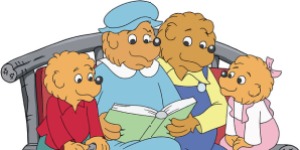 Berenstein Bears VS Berenstain Bears
Berenstein Bears VS Berenstain Bears

• “Mirror mirror on the wall” VS “Magic mirror on the wall”
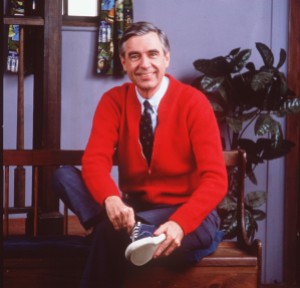
• Mr. Rogers sings, “It’s a beautiful day in THE neighborhood” VS “It’s a beautiful day in THIS neighborhood”

• Darth Vader says to Luke Skywalker, “Luke, I am your father” VS “No, I am your father”
Mandela Effect Reports on the Rise
In addition to some of these commonly reported shared experiences of alternate histories, some people are also remembering other things differently, such as: “If you build it, they will come” instead of now, “If you build it, he will come” and “Jiffy” peanut butter instead of “Jif.” As increasing numbers of honest reporters and authors start running into their own experiences with the Mandela Effect–both the private experiences that only they recognize, and the more publicly shared varieties–we will continue the growing conversation about the Mandela Effect, and why increasing numbers of people are noticing it now.
And in the meantime, I recommend that you keep asking “How good can it get?” to harness imagination and your ability to provide yourself with self-guidance from your highest levels of consciousness. Asking this question helps ensure we are honoring a longer-term, fuller and more harmoniously interconnected optimal experience. We can trust our highest, largest, most comprehensive levels of consciousness, and in so doing we will continue to experience different pasts and instantaneous transformations as we move through these stressful times to more optimal realities.
from: http://consciouslifenews.com/whats-behind-meteoric-rise-mandela-effect/11124116/


